In her debut graphic novel Becoming Unbecoming (Myriad, £14.99) Una, an anonymous Yorkshire artist, academic and comic creator, explores her own story as a victim of sexual abuse in the 1970s against the backdrop of the Yorkshire Ripper search. Exploring gender violence, blame and shame through image and text Una asks what it means to grow up in a society where male violence goes unpunished.
You didn’t begin drawing this with a view to it being published – what were you hoping to achieve?
I’m not sure it was as specific as a hope to achieve something. As an artist I draw all the time for different purposes, so while I don’t think of art as therapy, it felt natural for me to try to communicate my experience through drawing, during a period when I had returned to therapy, about eight years ago. Traumatic experience is difficult to articulate in words so I was interested to see what might happen if I just doodled and didn’t overthink it. At the time I was trying to assimilate what had happened to me, because no matter how much I recovered over the years, it always seemed to be under the surface. I remember saying to my therapist that I wanted to be able to access and learn from all my experiences, and that these particular experiences felt separated off somehow. Not all of the first drawings are still in the book, but they were the starting point for what became the project.
“Violence against women is so deeply embedded in the culture as an entertainingly scary event, it’s become a spectacle.”
How did you begin to condense such a complex topic and story into graphic novel form?
The brilliant thing about comics is that because the writer-artist is working with image and text, there’s a kind of alchemy at work that can be used to communicate quite complex ideas. There are multiple perspectives, timelines, voices, all unfolding in the same space and there is visual metaphor – a powerful thing. Growing numbers of comics creators are tackling difficult subjects – it’s not all about lighthearted funnies. In fact it never has been because in the UK political cartooning goes back to the 18th century and William Hogarth. Today there are numerous novel-length comics about medical matters – death, disease and dying, for example – including the brilliant Can’t We Talk About Something More Pleasant? by New York cartoonist Roz Chast and a lovely book about the loss of a child, Billy, Me And You, by UK cartoonist Nicola Streeten, as well as well-known books about the Holocaust, the Iranian revolution, war, Palestine, etc.
Will writing this book – or conveying your ideas to broad audiences more generally – ever compensate for a lack of justice?
When I started to take the doodling seriously as a project, it was at least in part because I was seeking some kind of justice. At the time I didn’t think I could get justice any other way – that’s the way it was for all my life and I don’t think I was wrong about that. Access to justice has been extremely problematic historically, and this has become clearer to the general public recently. But no, being able to write about it doesn’t compensate for a lack of access to justice.
However, things were changing in the culture and within the justice system as I wrote the book. During the seven years it took to research, draw and write (I was always fitting it around other things, like paid work) the many high-profile rape and child abuse cases with which we are now familiar came to light. One of the first cases that made me think I might have something useful to say about sexual violence was John Worboys, the black-cab driver who drugged, assaulted and raped perhaps 100 women. The women were disbelieved when they reported and were dismissed by police, who failed to investigate essentially because they thought the women were unreliable and slutty. This case really made me think about how often the idea of the slut, as a figure of ridicule who is to blame for everything that happens to her, stands in the way of the detection and prosecution of crime and therefore access to justice. It seemed to me that nothing had been learned since the days of Peter Sutcliffe, the Yorkshire Ripper.
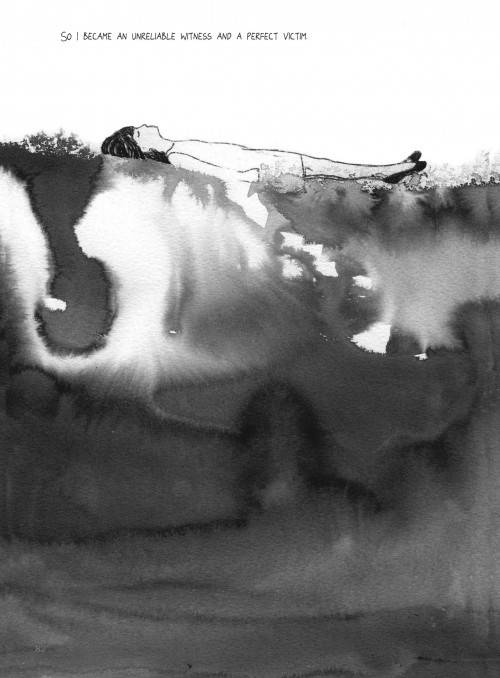
How does the case of the Yorkshire Ripper illustrate your story?
It wasn’t until I started researching the period in my life that I’m writing about, between the ages of 10 and 16, that I noticed how neatly this fitted with the timescale of the Ripper hunt – 1975 to 1981. It’s such a notorious period of misogyny, it seemed a gift to the themes I was trying to tackle but also I wondered what effect listening to the stereotypically misogynistic nonsense transmitted in the news and by those around me had on me as a girl, especially considering my specific circumstances. The Peter Sutcliffe case is still relevant and I think it’s a mistake to believe that the overt misogyny of the 1970s is behind us. The Worboys case in 2009 demonstrated that the same old casual police attitude towards rape victims was still rife and the Ipswich murders of 2006 showed that the media and the police still needed to be reminded by feminists of the limiting, misleading effect of categorising women as just prostitutes.
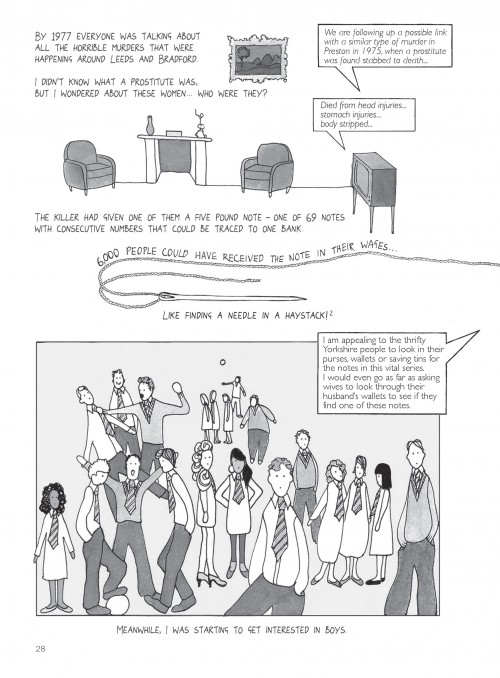
With so much literature around that case, how is yours different?
There’s a lot of Yorkshire Ripper stuff around in the mainstream. There are books and films and TV series based on it – 19 books that I have counted, all of them written by male authors. Perhaps it’s not for me to say who should write about what, but doesn’t it strike you as odd that so many men are so fascinated with serial killers? There is definitely not the same level of fascination among women writers. There are some brilliant feminist texts on the problems and failures of the Peter Sutcliffe case, like Joan Smith’s 1989 essay There’s Only One Yorkshire Ripper, and of course there is Richard McCann’s book Just A Boy, about the effects of losing his mother, but generally the impression I get from the literature is that too many authors couple a morbid fascination with Peter Sutcliffe with a dissociated attitude towards prostitutes and that they can’t see the wood for the trees. I wanted to do something different.
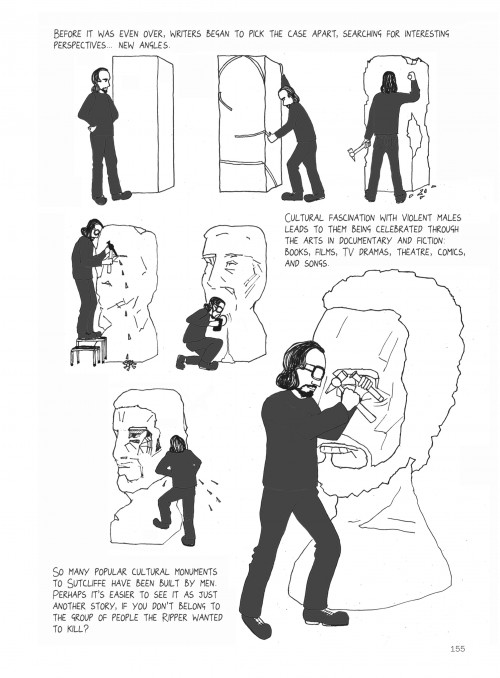
Is justice easier to find now than it was in the 1970s?
It’s not always easier to find, but people are putting more effort into looking for it. A worker at a rape crisis centre told me recently that there’s a lot of work going on behind the scenes to improve the justice system at all levels, including work with juries to address unhelpful myths about violence against women. Reporting is up, convictions are possible, perpetrators can no longer assume that they will get away with it, and that can only be a good thing.
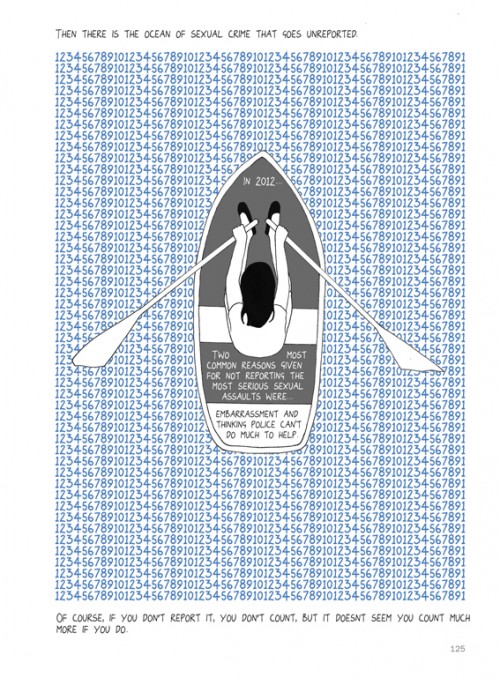
Is the digital revolution fuelling sexism or helping to combat it?
So much of the sharing of information and experience that has helped survivors gain support and find a voice has happened on the web. For me, as a young girl, I was completely alone. It was impossible for me to contact and speak with other girls who were sharing similar experiences and so I didn’t even know that they existed. I love internet feminism, even when everyone falls out. However the sheer volume of nastiness towards women and girls on the internet is quite horrifying. It’s the same old, same old though – the hostility has a long tradition and the only difference now is that everyone can see it. This has an effect on us all, regardless of gender, and it’s interesting to read some of the comments from men on threads like Everyday Sexism, because so many men are also horrified by gendered abuse towards women, and profess dismay at the men who are perpetrators.
Why does the idea that most abusers are victims of abuse prevail and where does that theory fall down?
It’s something that has become received wisdom and in one sense it’s true – social workers know that families can pass down abusive behaviour. But if you take gender into account, for all types of physical and sexual violence, then the much larger number of women and girls who are abused does not translate into a large number of female perpetrators. Instead there is a gigantic gendered difference in the fact that statistically most perpetrators of all types of abusive and violent behavior are male. This is not the same as saying that all men are inherently violent, because large numbers of men never hurt anyone, whether they were abused themselves or not, so there must be an element of choice in this situation and there must be something cultural and gendered in it. I might add that for those of us walking around with this history, who are just getting on with our lives, it’s a pretty insulting idea too.
Why is the idea that women and girls deserve what they get so much easier than the fact that violent males cause misery to millions worldwide in times of peace and times of war?
That’s a good question because it’s one of mine! The only answer I have is: because misogyny.
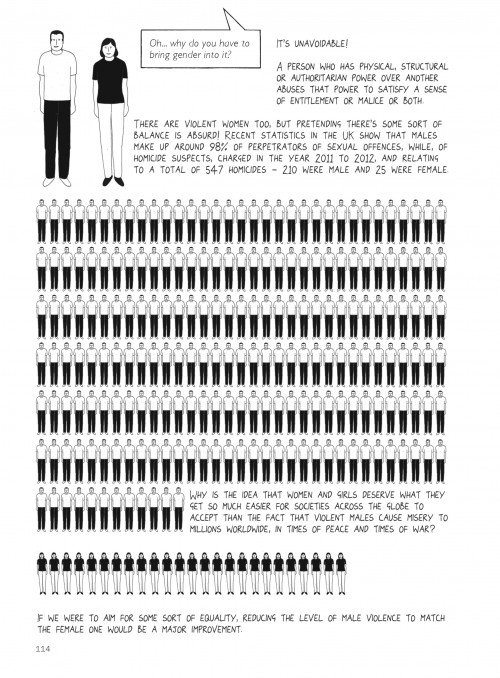
Why do cultural forms so often dramatise the rape and murder of women and rarely men?
Violence against women is so deeply embedded in the culture as an entertainingly scary event it’s become a spectacle. Men are much more likely to die violently (at the hands of another man) but that’s not perceived as entertaining. Rape isn’t exclusively a problem women and girls encounter either, and though there are scenes in films that depict male rape and murder, this often takes place in a prison setting (so outside the everyday) while rape of a female is pretty much standard fare. Constant depictions of raped and murdered women’s bodies are impossible to avoid. It’s worrying that so many people accept this unbalanced state as normal. I think writers, directors, comedians, etc think it’s about censorship when they are asked to consider audiences, but it’s not. It’s just good manners to consider that many people in the audience might be made very uncomfortable, even ill, by your onscreen depiction of sexual violence, and that they are unlikely to be able to say so.
Why should the notion of survivor be treated with caution?
The legal word for a victim of rape is actually “complainant” – making a complaint; it sounds like you got the wrong pizza or something. No one wants to be a victim either, that’s understandable, so we’ve come up with this more positive term “survivor”. I don’t have a problem with that, but I do worry about a subtext that appears in survivor writing that implies a strong survivor: a person who has overcome their difficulties through a kind of spiritual or internal super-strength. I think this can be unhelpful for two reasons. Firstly, the victim of the violent act thus tidies away the resulting mess, while for perpetrator and community it’s business as usual. Secondly, too many women and girls do not survive at all, or do not thrive, and this seems to imply it’s because they didn’t try hard enough, when it’s actually a combination of circumstance, privilege and available support that determine survival.
What do the varied visual approaches – abstract and conventionally narrative – achieve?
The book is quite experimental. I was new to comics when I started it so the varied approaches are actually my “workings”. I expected at some point to fix on a particular method or style but actually the opposite has happened, I’ve become more experimental and more ambitious for the comics form. I’ve learned such a lot by making this book, but I’ve also developed other small press stories during the same period, and I’m developing new projects right now in the same eclectic vein.
Why did you need to become Una and what does anonymity provide you with?
Beyond the obvious thing that it’s a pseudonym and that as a victim of rape I have legal anonymity for as long as I want it, Una means one, and this is significant because I am one of so many. It’s about being any girl, any woman, potentially. It’s also interesting in terms of shame and stigma. I mean, why should I hide? But the fact is we are hiding in our millions. It also occurs to me that it’s not important who I am. The cult of the individual is so widespread I think people don’t notice how much it can distract from what a person is actually saying.
Antonia Charlesworth

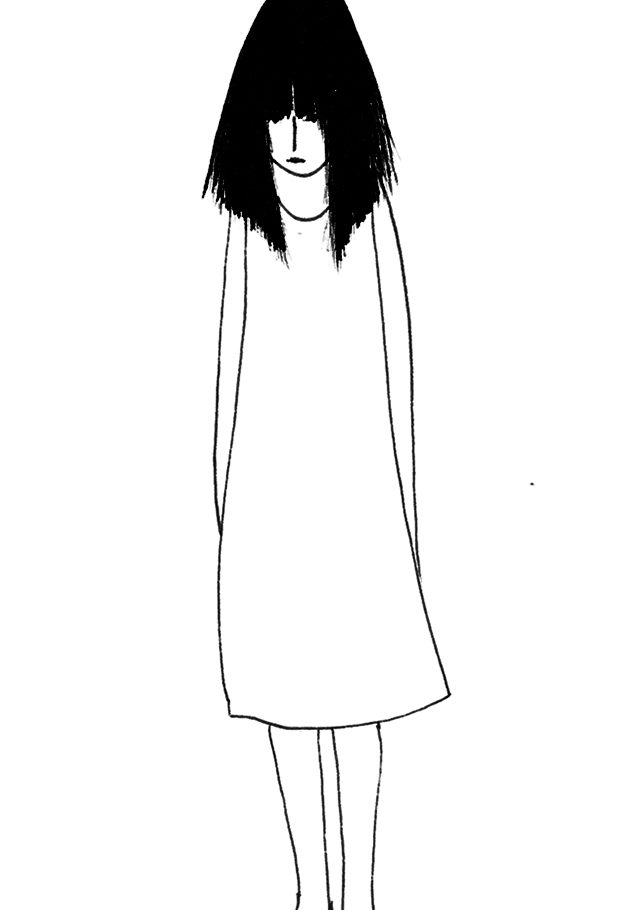
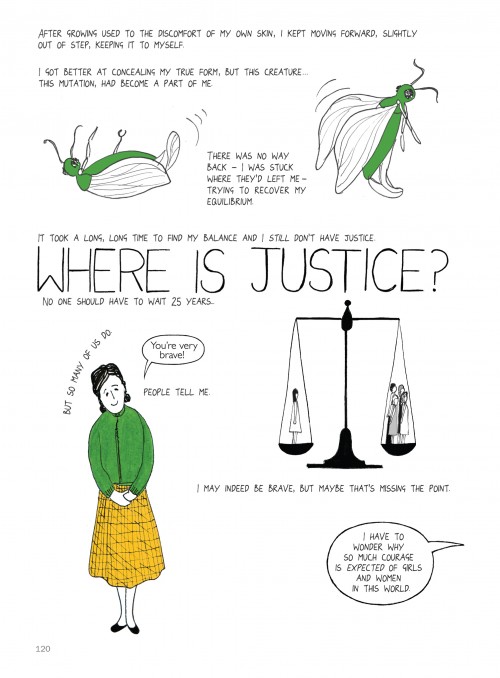
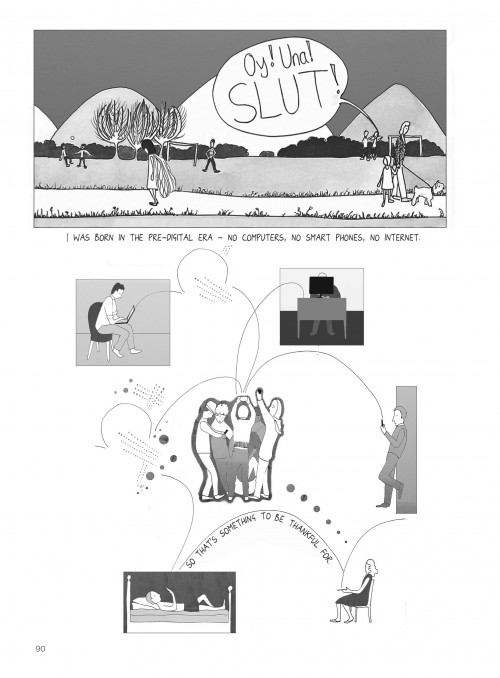
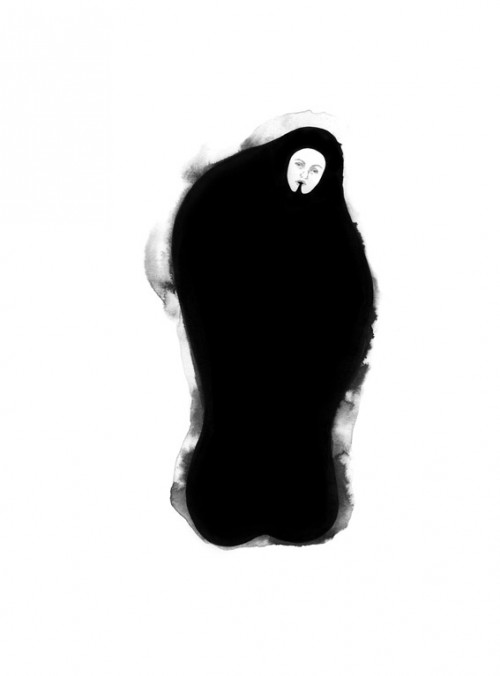
Leave a reply
Your email address will not be published.